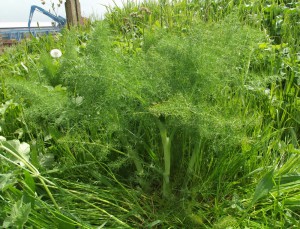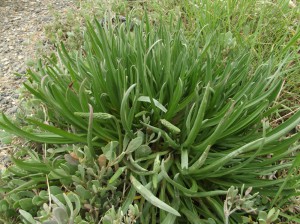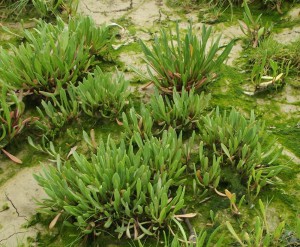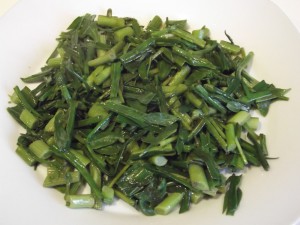22/05/201
Wild fennel is not a saltmarsh plant, although its preference for coastal and riverbank locations means it can often be found nearby. Late spring is the best time to pick it, while the stems are still soft and juicy. You can use the whole plant as if it was the familiar version, although obviously the wild plants don’t have the mutated swollen stems of domesticated “florence fennel.”
Saltmarsh itself is a rich source of foraged food right through the spring and summer months, although the selection of plants available changes as the year progresses. This year’s extended winter has meant that the marsh samphire which would normally start to be available by now is still too small to collect, but there are plenty of other edible plants to choose from. In fact nearly all of the saltmarsh plants are good to eat.
Here are three of the best.
The first is sea plantain, which is a relative of the more-familiar and also-edible ribwort, greater and hoary plantains, and by far the best for eating. The flavour is a bit like chives. Please be responsible/sensible when collecting this species. While I was searching for (and failing to find any) usable marsh samphire, I passed through a location where all of the sea plantain had been taken, presumably by a person who was collecting for commercial purposes, judging by the amount that had been taken. This person clearly couldn’t be bothered to walk further than 20 metres from the nearest carpark, and had stripped stripped one location of sea plantain instead of taking just a few from each place. I might also add that this location was also inside the boundary of an SSSI, from which nothing should be foraged at all, especially when a slightly longer walk takes one outside of that SSSI.
The second is sea lavender, which is a complex group that only botanists stand much chance of identifying to species. It looks like a fleshier version of sea plantain, although it is unrelated and has completely different flowers. The third is sea purslane – a super-abundant relative of marsh samphire (though you wouldn’t guess to look at it.) Sea purslane is available all year round, but is also at its best in the late spring and early summer.
These four species I combined in roughly equal amounts, and then popped in the microwave on full power until the fennel stems were just cooked, but still a bit crunchy (about three minutes for the two portions shown below). No additional salt is required, because the saltmarsh plants are naturally salty. I used the leaves of the fennel as a bed for cooking the lemon sole for which these wild vegetables formed an accompaniment.




